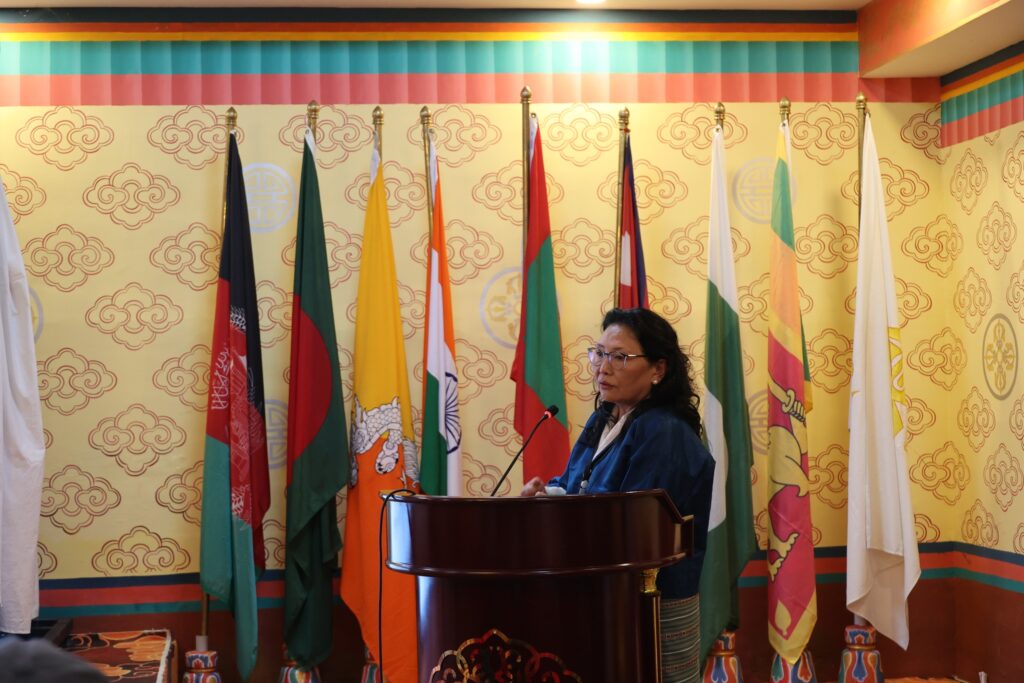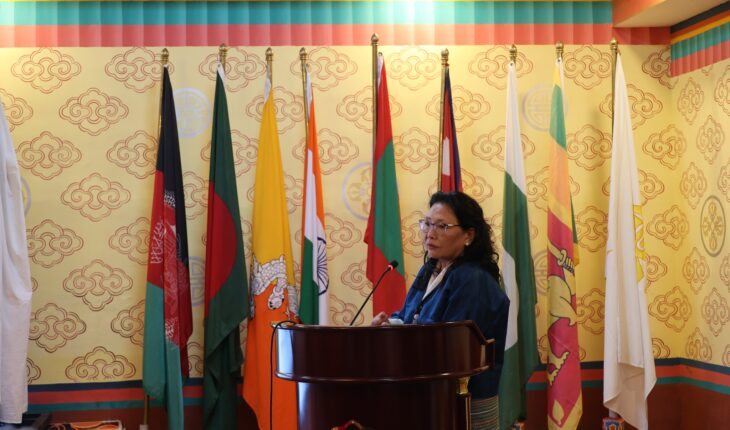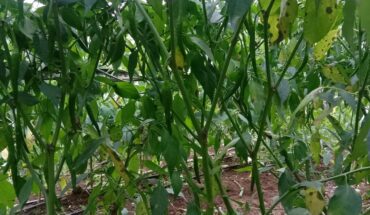
DAWA ZANGMO
Thimphu
In a bold step towards sustainable food systems, Bhutan is increasingly positioning itself as a regional frontrunner in the agroecology transition, especially within the Himalayan region. Embracing the concept of a “Green Evolution,” the nation seeks to transform its agro-food systems by advocating for environmentally sustainable, climate resilient, and socially inclusive agricultural practices. Central to this shift is the recognition of the urgent need for investments in modernization, including mechanization, digital technologies, and productivity enhancement tools for farmers.
This transformative agenda is being pursued with a strong commitment to environmental conservation. Bhutan’s land use policies are among the most eco-conscious in the world, with an impressive 52 percent of its territory under forest cover. Furthermore, 51.4 percent of the country’s total land area is designated as protected areas, leaving only three percent for human settlement and agricultural cultivation. This delicate balance underpins Bhutan’s approach to agricultural development pursuing commercial growth while preserving its natural heritage.
Guiding this vision are key national policy frameworks such as the 13th Five-Year Plan (2024–2029), the Bhutan Agro-food Strategy 2034, the Food and Nutrition Security Policy of Bhutan 2023, and the National Adaptation Plan. These strategic documents outline the government’s roadmap for achieving food security, reducing rural poverty, and responding to climate change through agroecological practices.
During a recent regional conference titled “Promoting Agroecological Approaches for Sustainable Transformation of Agro-food Systems in South Asia,” held from July 29 to 31, Bhutan reiterated its dedication to these goals. The event brought together ministers, senior government officials, researchers, and experts from the South Asian Association for Regional Cooperation (SAARC) member countries. Themed “From Green Revolution to Green Evolution,” the conference emphasized a shift away from industrial agriculture towards a more holistic, sustainable approach rooted in ecological principles.
Kesang Tshomo, Advisor to the Department of Agriculture, provided a comprehensive analysis of Bhutan’s agricultural landscape. During the regional conference she underlined that agroecology offers a systems-based solution to address the interlinked challenges of unsustainable farming, vulnerability to climate shocks, and food insecurity. “Agroecology is not just a farming method it’s a strategic framework that emphasizes ecological balance, biodiversity, and social equity,” she explained. Kesang Tshomo noted that this approach aligns closely with the United Nations Sustainable Development Goals (SDGs), particularly those related to zero hunger, climate action, and reduced inequalities.
She also emphasized the importance of linking agroecology with broader policy initiatives and called for increased investment in technologies that are farmer friendly and appropriate for Bhutan’s unique terrain. Mechanisation and digitization must be prioritized to boost productivity, she said, especially for smallholder farmers who form the backbone of the country’s agricultural sector.
The Secretary of the Ministry of Agriculture and Livestock (MoAL), Thinley Namgyal, acknowledged the historical significance of the Green Revolution, which dramatically increased global food production over the past six decades through innovations like high-yielding crop varieties, synthetic inputs, widespread irrigation, and mechanization. However, he was quick to point out its downsides.
The Secretary further stated that although the Green Revolution helped feed more than a billion people, it also caused serious environmental and social problems. These include soil and water pollution due to overuse of chemical fertilisers and pesticides, widespread biodiversity loss from monoculture, increased pest and disease outbreaks, and socio-economic disparities that favoured large scale farmers over smallholders.
In response, he affirmed Bhutan’s strategic pivot toward a “Green Evolution.” This new approach aims to correct past imbalances by promoting agricultural methods that are environmentally sound, economically viable, and socially inclusive.
At present, Bhutan’s agriculture sector contributes 14.9 percent to the country’s gross domestic product (GDP), with around 41.3 percent of the population engaged in farming mostly traditional and low-input, small scale agriculture. Interestingly, these traditional practices, such as intercropping and green are deeply embedded in Bhutanese culture and spirituality. As such, they inherently align with agroecological principles and Bhutan’s holistic development philosophy of Gross National Happiness (GNH).
Despite these strengths, the agriculture sector faces multiple challenges. Among the most pressing are increasing incidences of human wildlife conflict, unpredictable weather patterns, and recurring droughts. Farm labor shortages and the slow pace of digital technology adoption further compound these difficulties. Structural barriers such as limited access to education, rugged terrain, and small farm sizes restrict the reach of modern farming solutions.
To address these issues, the 13th Plan sets ambitious targets for the agricultural sector. By 2029, the government aims to raise the agro-GDP to Nu 50 billion. Simultaneously, it plans to increase agro-commodity exports to Nu 6 billion. In terms of food self-sufficiency, Bhutan is targeting 30 percent for rice, 80 percent for vegetables, 50 percent for chicken, 60 percent for pork, and 62 percent for essential vegetables. A key objective is to maintain 100 percent self-sufficiency in egg production.
To support these targets, the government has ramped up investments in climate-resilient crops and diversified farming systems. Bhutan currently cultivates more than 80 crop species across its various agroecological zones, which not only enhances food security but also serves as a buffer against climate variability. An integrated pest management (IPM) system has been introduced to reduce dependency on chemical pesticides. The system enforces stringent regulations to minimize agrochemical use while promoting natural pest control.
Traditional seed systems are also being strengthened. Around 95 percent of seeds used by farmers are now locally produced, thanks to robust seed supply initiatives led by the agriculture ministry. This ensures greater seed sovereignty and reduces dependence on external inputs.
The conference also reviewed past and ongoing projects that have contributed to Bhutan’s agroecological transition. These include the National Organic Flagship Programme, the Food Security and Agriculture Productivity Project, the Commercial Agriculture and Resilient Livelihoods Enhancement Programme, and the Agroecology Roadmap 2024. The Himalayan Agroecology Initiative was also highlighted as a key regional effort supporting agroecology-based interventions.
Despite the progress, Kesang Tshomo stressed the need for continued efforts to address persistent gaps. She highlighted the importance of investing in the rural agricultural workforce and developing gender-responsive technologies and policies. More targeted support is required for women led agricultural cooperatives, including value addition training, capacity building, and access to markets. These interventions would help close gender disparities in decision-making and economic participation in agriculture.
Kezang Tshomo further recommended strengthening institutional capacities and policy frameworks to support agroecological transformation. She called for enhanced regional collaboration among SAARC member nations, particularly in knowledge exchange, investment mobilization, and joint research initiatives. Additionally, she advocated for the full integration of agroecological strategies with climate adaptation, nutritional outcomes, and sustainable livelihood development.
The conference concluded with a collective call to action, urging participating countries to realign their agricultural policies and practices with the principles of agroecology. Bhutan’s model, blending traditional wisdom with modern policy and scientific insights, was acknowledged as a potential blueprint for sustainable agricultural transformation in the region.
As Bhutan moves forward with its “Green Evolution,” its efforts serve not only national interests but also contribute to broader regional and global goals of food security, climate resilience, and ecological sustainability.




